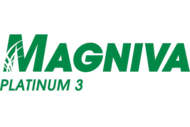C4 tropical grasses are perennial grasses that are classified by the pathway plants use to capture carbon dioxide during photosynthesis. As such, C4 plants produce a four-carbon molecule. These grasses are generally cultivated between 25˚N and 25˚S of the equator. C4 grasses have greater light and temperature requirements than cool-season grasses. On the other hand, they tend to have lower moisture requirements.
C4 grasses are more efficient in fixing carbon dioxide than other grasses. However, their tissue composition results in plants with less crude protein (CP) and soluble carbohydrates. C4 grasses also have greater concentrations of cell wall components such as cellulose and hemicelluloses than cool-season grasses.
Maturity at harvest
It is difficult to establish a general recommendation due to the wide number of species and varieties of C4 grasses. The ideal maturity for tropical grasses should be at 95% of light interception. However, at this stage, C4 grasses usually remain quite moist. Therefore, it is common to postpone harvest to elevate the dry matter (DM) content at the expense of the forage’s nutritive value.
Dry Matter
Grasses begin to lose sugars soon after they are mowed, and sugars are the substrate for microbial fermentation. The key to high-quality hay crop silage is to dry the crop at the proper DM level for ensiling as quickly as possible.
In general, do not harvest C4 grasses at less than 25% DM, or greater than 50% DM, if the forage has to be conserved as haylage.
Challenges
Due to its lower sugar levels, spoilage on the face and the overall life of grass silage is usually less of a problem compared to corn silage. However, butyric acid formation in low DM forages is a greater problem when forages are left in the field overnight.
Tropical grass silage is at a high risk for effluent losses. Click here for more information on effluent losses.
A critical component to high-quality silage is a rapid drop in pH. Grass silage typically has a higher buffering capacity, or resistant to a change in pH. Compounding this challenge is the low number of lactic-acid bacteria (LAB) naturally occurring on the crop, which help drive a rapid pH drop. This makes the use of a research-proven forage inoculant important to creating high-quality silage. Click here for more information on inoculant choices.








